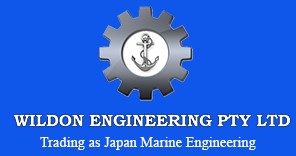How Do Marine Diesel Engines Work?
Blog | February 26th, 2021
A powerful mechanical heart beats deep inside a marine boat. Or maybe it’s an alloy-plated best that crouches below decks. Whatever the metaphor, Yanmar diesel engines meet and often exceed the most grueling engineering standards. Fueling those advanced propulsion systems, enhanced diesel fuels provide energy to the pistons and cylinders in the internal combustion chamber. The controlled explosions in here rely on beautifully engineered Yanmar components, including a husky fuel injection system.
Deconstructing the Compression Chamber
Stripped to the frame, a Yanmar diesel engine is laid bare. A die-cast frame supports the elegantly engineered crankshaft. A flywheel is mounted at one end, all the better to assure efficient propulsion momentum. Cylinders are rising and falling. They turn that crankshaft, rotate the flywheel, and the diesel-compressed energy is immediately transmitted to a coupled propeller shaft. It’s here, in the compression chamber, that the diesel is compressed and combusted. Unlike their plug-fired gasoline cousins, diesel compression chambers squeeze hard, so hard that the plugless design explodes its combustible load and releases copious amounts of energy. That’s a fundamental process. It’s the same in every marine engine of this type, yet somehow the Yanmar design engineers have produced an engine architecture that outstrips other boating propulsion system. Where are those gains produced?
Tapping the Fuel Injected Difference
The Yanmar diesel engines described here are packed with explosive energy, and that raw power is being precisely regulated by the inbuilt fuel injection system. The atomization of the fuel, its timed introduction into the cylinders, the way the pistons interact with that tightly controlled spray, all of these system factors are optimized. And what’s the result of this special fuel regulation system? Well, fuel efficiency and propulsion responsiveness are the two immediate upshots, but there’s more. Expect a cleaner burn, a low-maintenance boating experience, and less parts wear when these top-tier diesel engines achieve their full potential. Of course, the incorporation of a series of high-quality filters and a smart coolant solution helps, for these auxiliary systems keep the fuel stream in fine fettle as it’s pumped towards the combustion chamber.
Timing systems and cooling mechanisms support the fuel burning cycle, which is as we’d expect, but it’s the fuel injection system and the engine architecture that really pulls out all the plugs when that Yanmar diesel engine receives its signal to accelerate. Timed perfectly, atomized precisely, the air and water cooled diesel enter the engine just as the cylinders and camshaft reach an optimal point in the combustion process, then the coupled propulsion shaft takes up the instantly generated kinetic energy and responsively surges forward, all while the fuel pump sips amiably from its tank.
Optimized by NetwizardSEO.com.au
Recent Posts
- Turbochargers Supply from Japan Marine: Wildon Engineering’s Excellence in Global Shipping
- Mitsubishi VOS Ballast Water Treatment System: Next-Generation Marine Environmental Solutions
- Yanmar Marine Compressors: Reliable Power Systems for Commercial Vessels
- Water-Lubricated Stern Tube Bearings Explained: How EVR Technology Supports Marine Propulsion
- YANMAR Auxiliary Generator Engine Parts for Commercial Vessels
- Fluid Control Systems: Innovations in Marine Applications
- Yanmar Diesel Generators Australian Distributor: Power for Shipping & Marine Operations
- Navigation & Communication Equipment: Essential Tools for Safe Voyages
- Stern Tube Seals: Preventing Leaks & Maintaining Vessel Integrity
- Innovative Cathodic Protection Technologies for Maritime Industries
